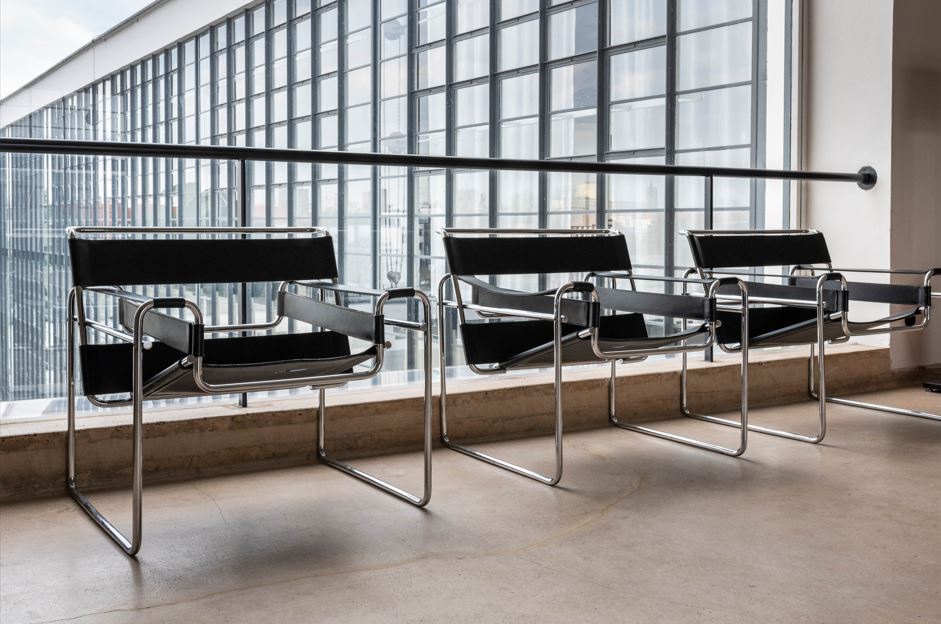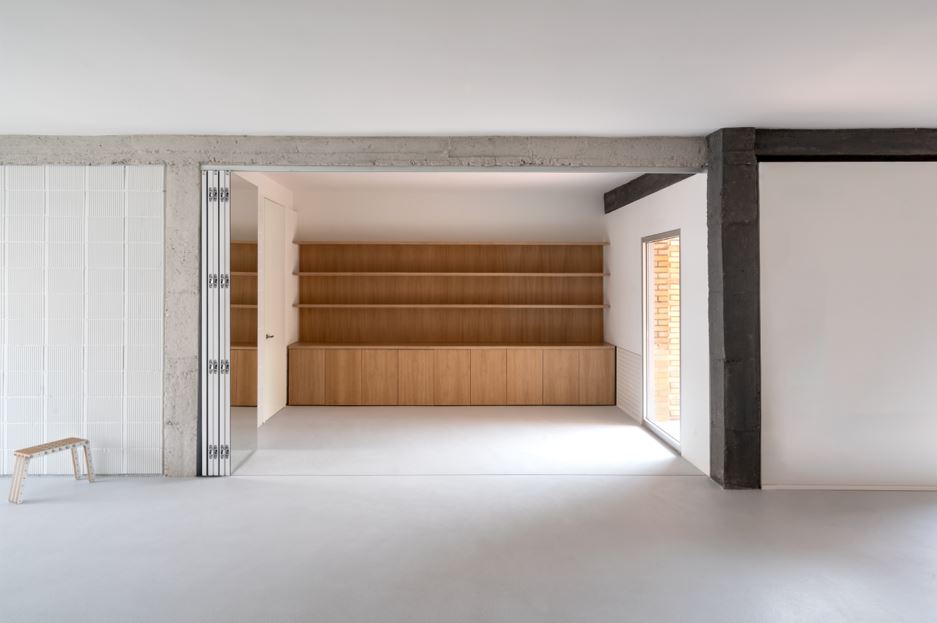In the vast landscape of architecture and interior design, few movements have had as lasting an impact as Bauhaus. Founded in 1919 by Walter Gropius in Weimar, Germany, this school not only revolutionised the aesthetic concepts of its time but also established principles that continue to define contemporary spaces. With its focus on minimalism and functionality, Bauhaus stands as a cornerstone in the quest for designs that balance beauty and utility, giving rise to what can be called ‘minimalism with purpose’.

The Foundations of Bauhaus: Simplicity and Functionality
The Bauhaus movement emerged as a response to the complexities and excesses of 19th-century ornamental design. Its founders and key figures, such as Gropius, Ludwig Mies van der Rohe and Marcel Breuer, advocated for a simplified approach, where every element had a clear purpose. ‘Less is more,’ one of Mies van der Rohe’s most iconic phrases, encapsulates this philosophy: eliminating the unnecessary to allow the essential to shine.
In interior design, this translates into open spaces, clean lines and authentic materials that proudly showcase their true nature. Elements like Breuer’s Wassily chairs or Wagenfeld’s lamps are not only beautiful objects but also feats of engineering that address real functional needs. This fusion of form and function is the essence of purpose-driven minimalism that the Bauhaus legacy has left behind.
Purpose-driven Minimalism in Contemporary Spaces
A Legacy of Bauhaus
Today, the principles of Bauhaus resonate in an era deeply defined by sustainability and technology. Contemporary spaces aim to be not only visually appealing but also functional, adapting to the needs of their inhabitants. This approach aligns perfectly with the Bauhaus philosophy, where every element must justify its presence.
Open and Flexible Spaces
One of the most visible legacies of Bauhaus is the adoption of open and flexible spaces. Modern homes feature open-plan designs that remove barriers between functional areas such as the kitchen, dining room and living room.
This approach enhances functionality and encourages connection among the people sharing the space. Inspired by Bauhaus, these designs promote clarity and efficiency, removing visual distractions and allowing inhabitants to focus on what’s essential.
Sustainable and Authentic Materials
The use of authentic materials is another key principle inherited from Bauhaus. Instead of hiding the nature of the materials, their essence is celebrated. Exposed concrete, natural wood and steel are common in modern interiors, demonstrating that beauty lies in simplicity and authenticity.
Today, this principle has evolved to incorporate sustainability. Contemporary designers opt for recycled, low environmental impact and ethically produced materials, demonstrating a commitment to the planet without compromising on aesthetics. In this way, Bauhaus continues to shape the vision for the future.
Technological Design
Bauhaus also laid the groundwork for the integration of technology into design. The functional objects that defined this movement were a product of the technical advancements of the era.
Today, this principle translates into smart interiors, where technology is seamlessly integrated to enhance the functionality of the space. Automated lighting systems, connected modular furniture and cutting-edge devices simplify daily life, always serving a clear and defined purpose, staying true to the Bauhaus spirit.

The Aesthetic Impact: Less Distraction, More Focus
In a world flooded with visual noise, the aesthetic principles of Bauhaus provide a sanctuary of clarity and order. Contemporary spaces influenced by this movement stand out for their ability to minimise distractions and focus attention on what truly matters.
With neutral colour palettes—whites, blacks, and greys—occasionally accented by vibrant tones, these interiors create a sense of calm and balance. This allows key architectural and decorative elements to stand out.

Lessons from Bauhaus for Modern Interior Design
1. Functionality as the Foundation of Design
2. Bauhaus taught that every design must respond to a need. In contemporary interiors, this translates into spaces that maximise utility without sacrificing aesthetics. Each piece of furniture and decorative element has a clear purpose, avoiding excess.
3. Balance between Art and Craftsmanship
Bauhaus succeeded in blurring the lines between art and functionality. This is reflected in furniture that serves as both works of art and practical solutions. Designers such as Le Corbusier and Eileen Gray, influenced by Bauhaus, continue to inspire pieces that achieve this balance.
4. Adaptability and Modularity
In compact urban environments, adaptability is essential. Bauhaus anticipated this need by designing modular and multifunctional furniture. Today, convertible sofas, folding tables, and smart storage solutions optimise space usage.
An Eternal Influence
Bauhaus was not just an artistic movement, but a philosophy that transformed how we conceive the spaces we inhabit. Its legacy endures in the purposeful minimalism that defines contemporary interiors, reminding us that true beauty lies in the essential.
As we face challenges such as sustainability and technological integration, the principles of Bauhaus continue to guide us. In every clean line, in every functional space and in every authentic material, this movement demonstrates that less is always more, especially when that ‘less’ serves a purpose.

